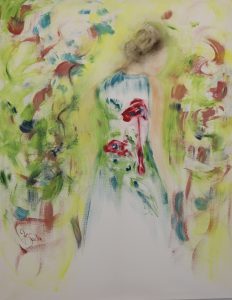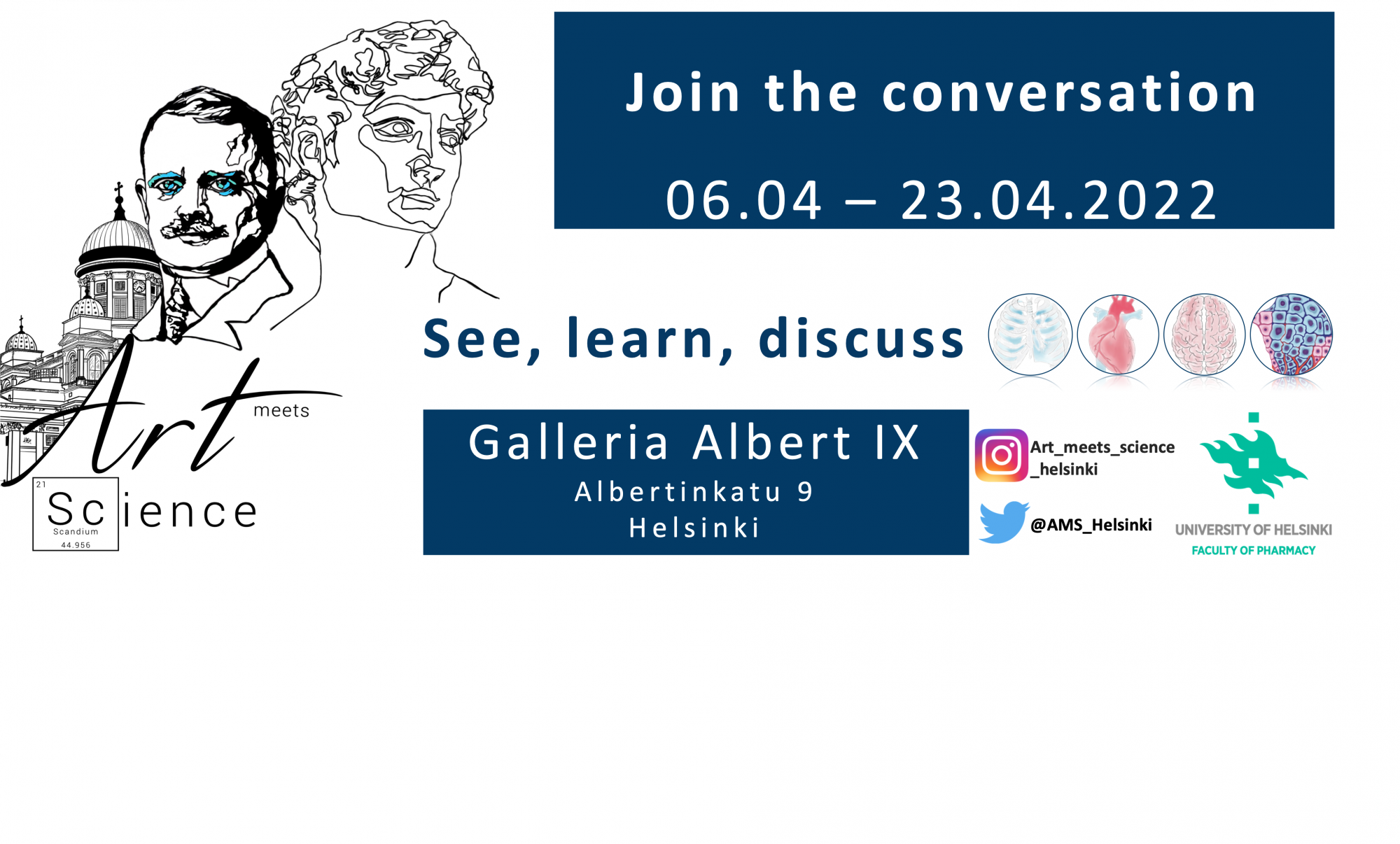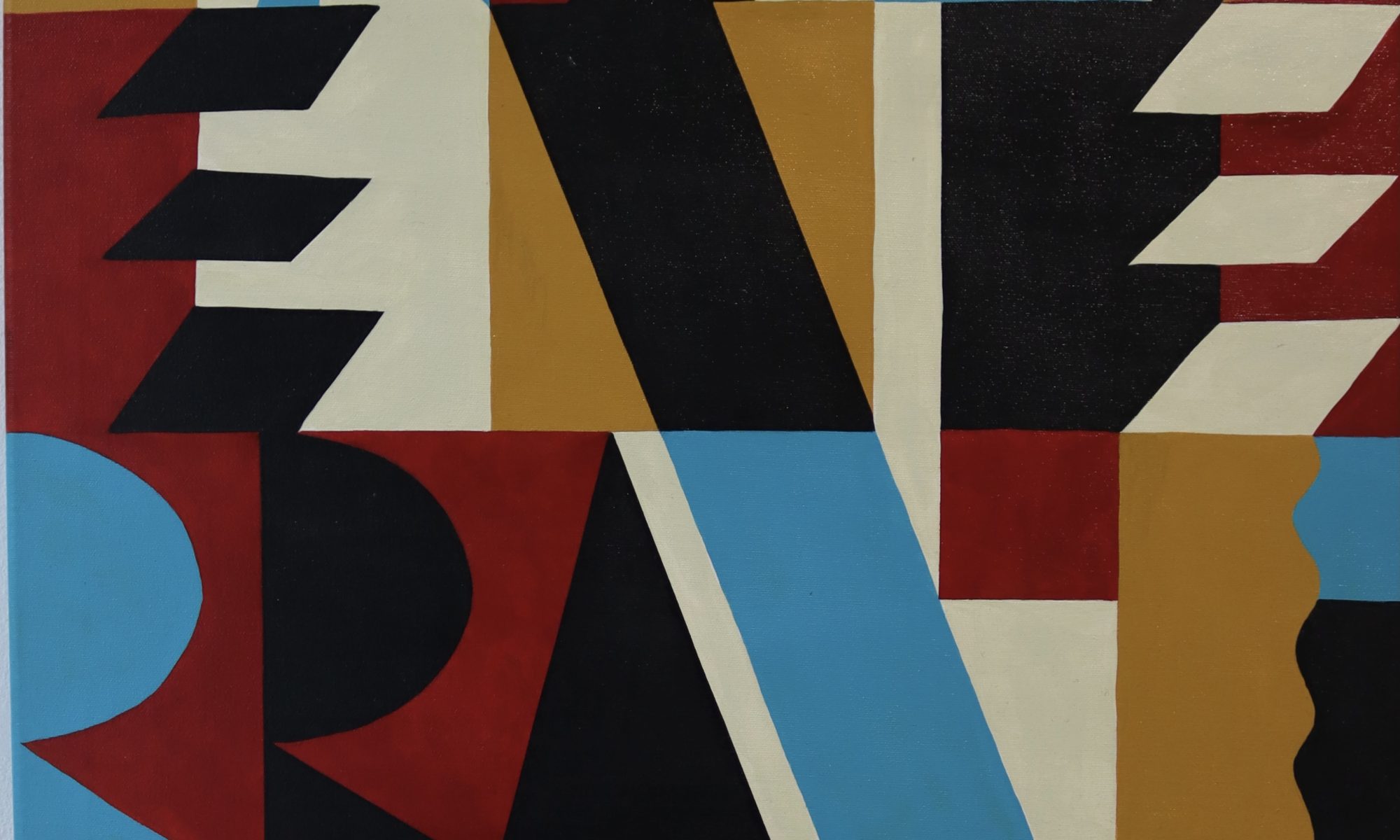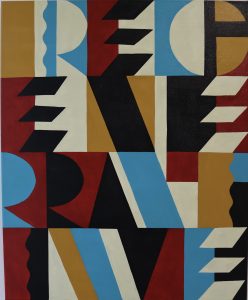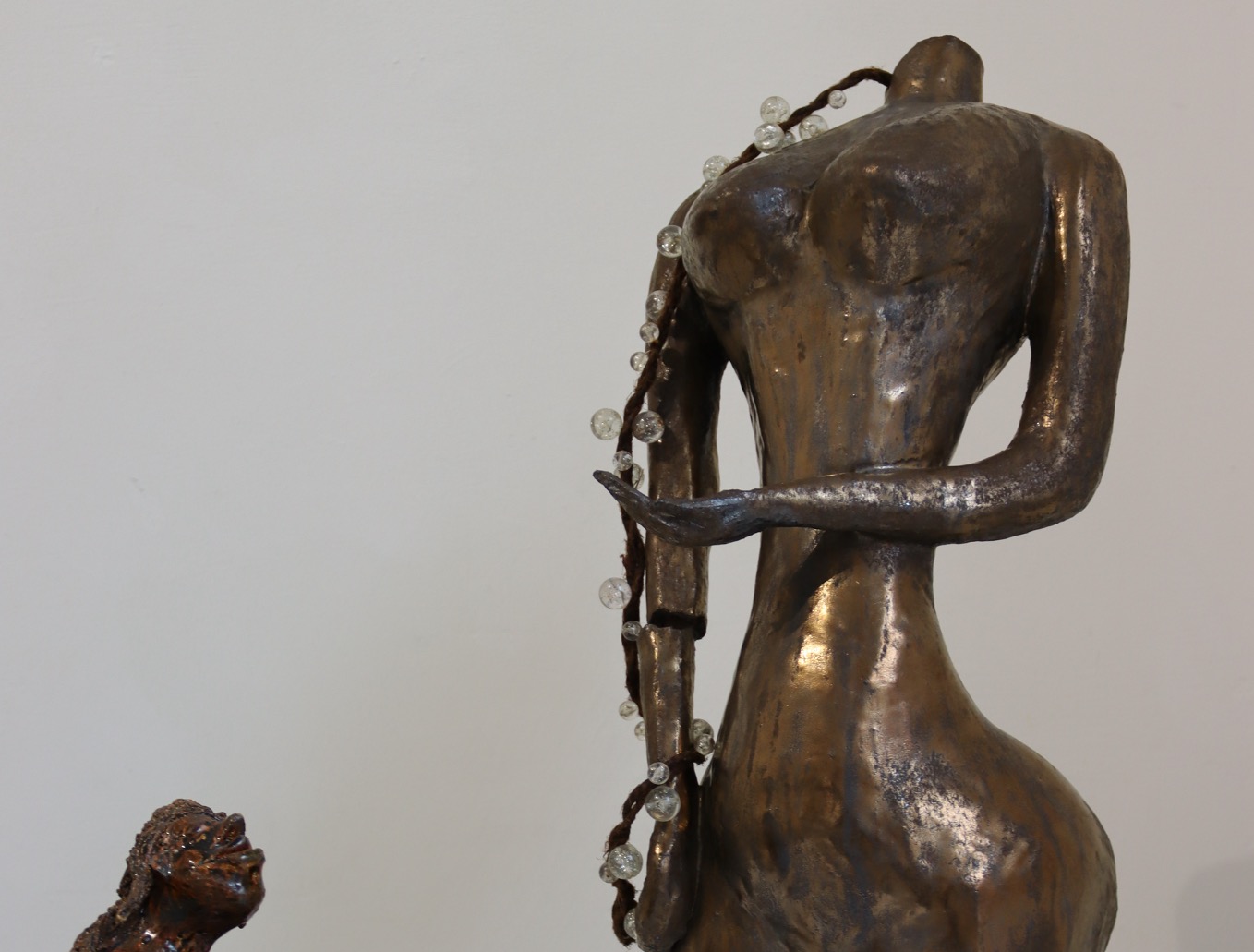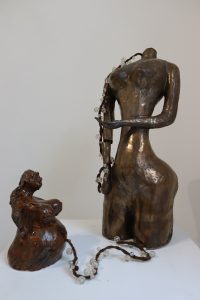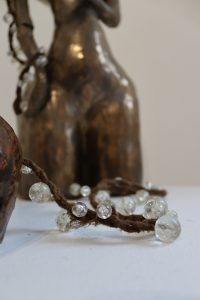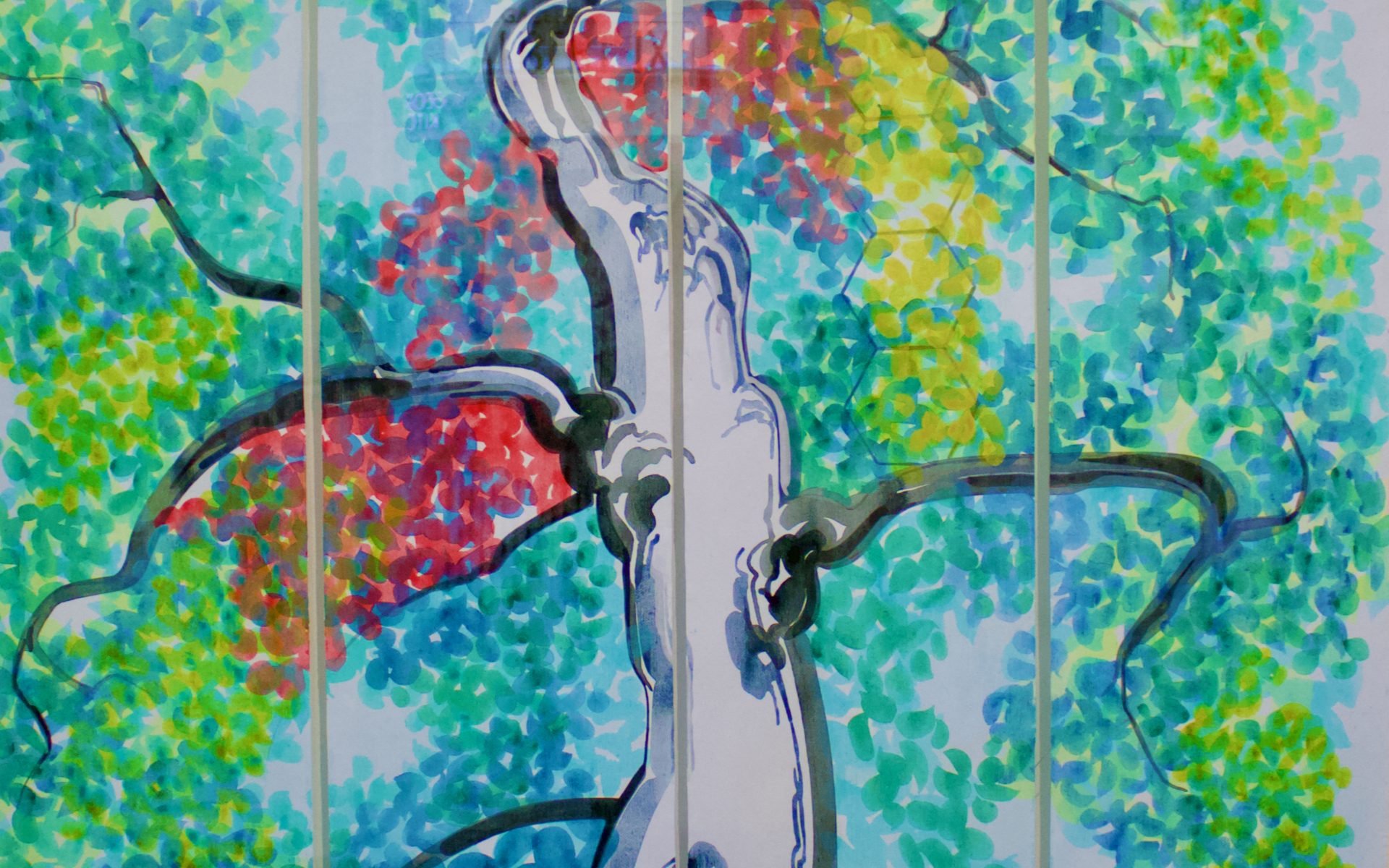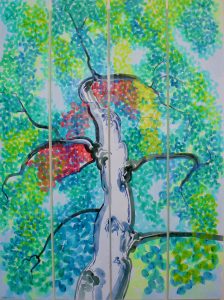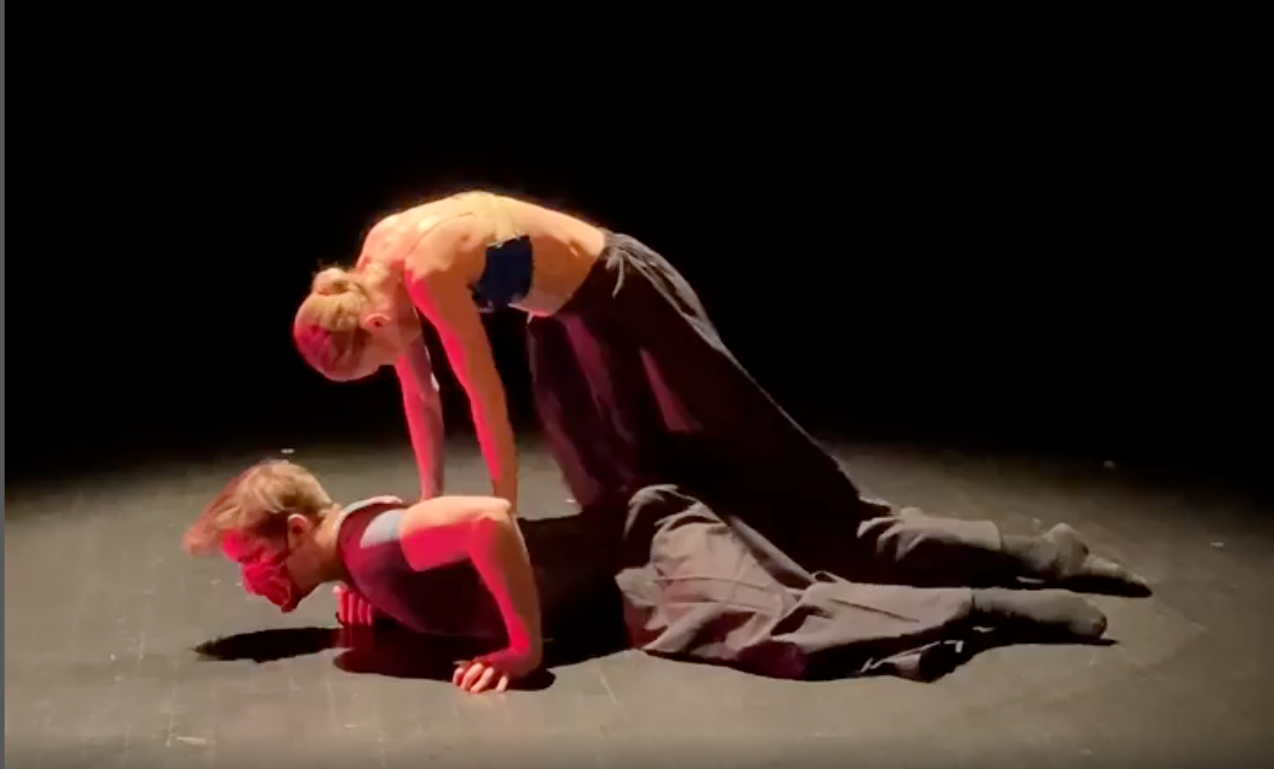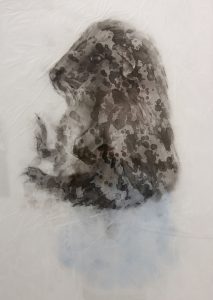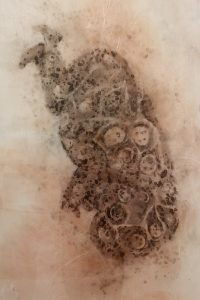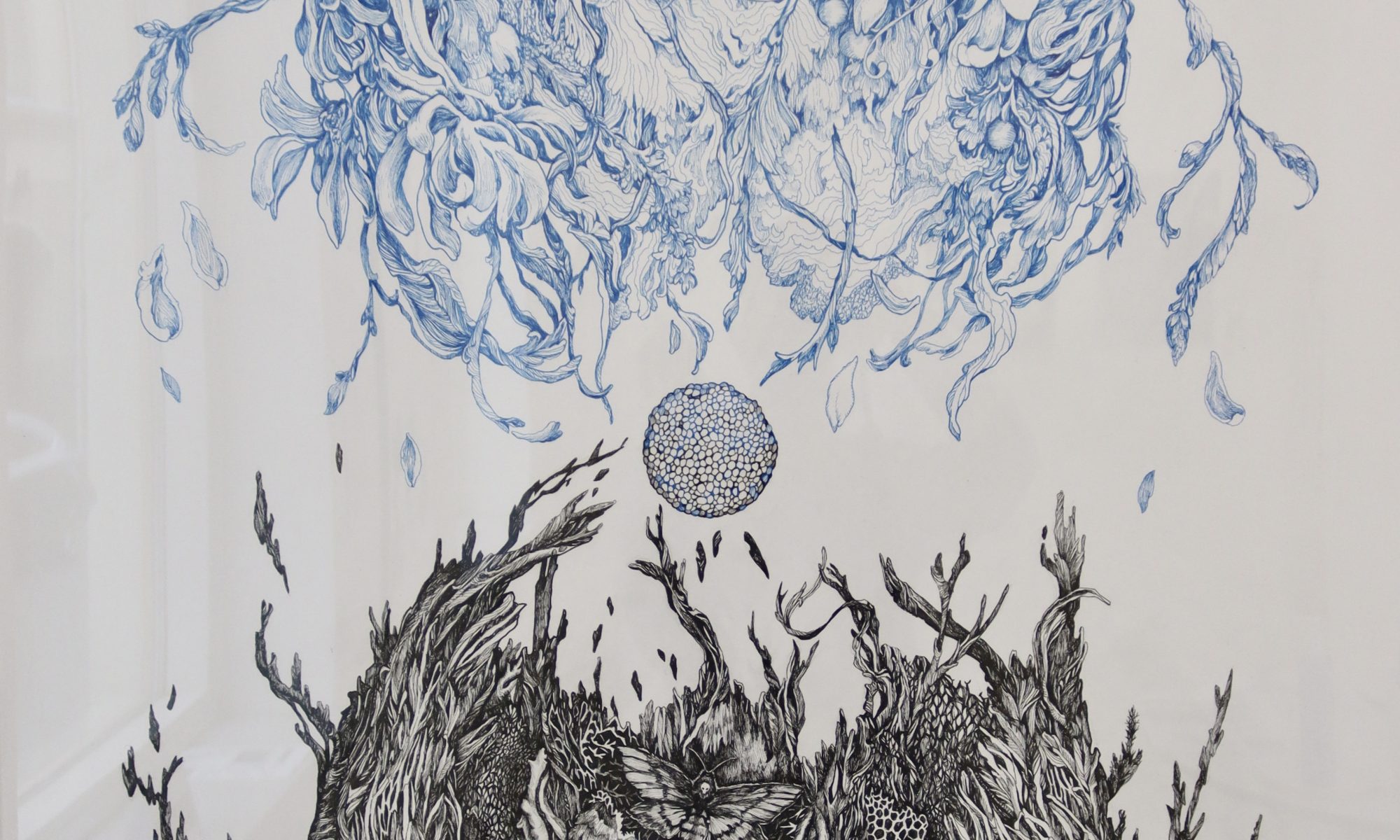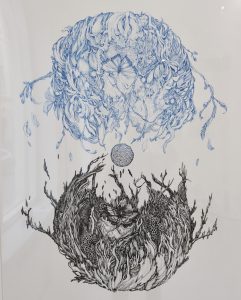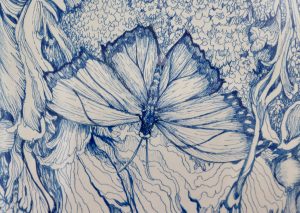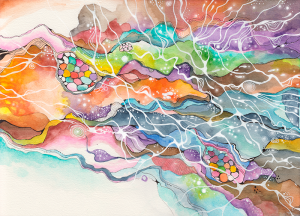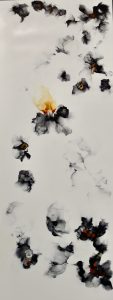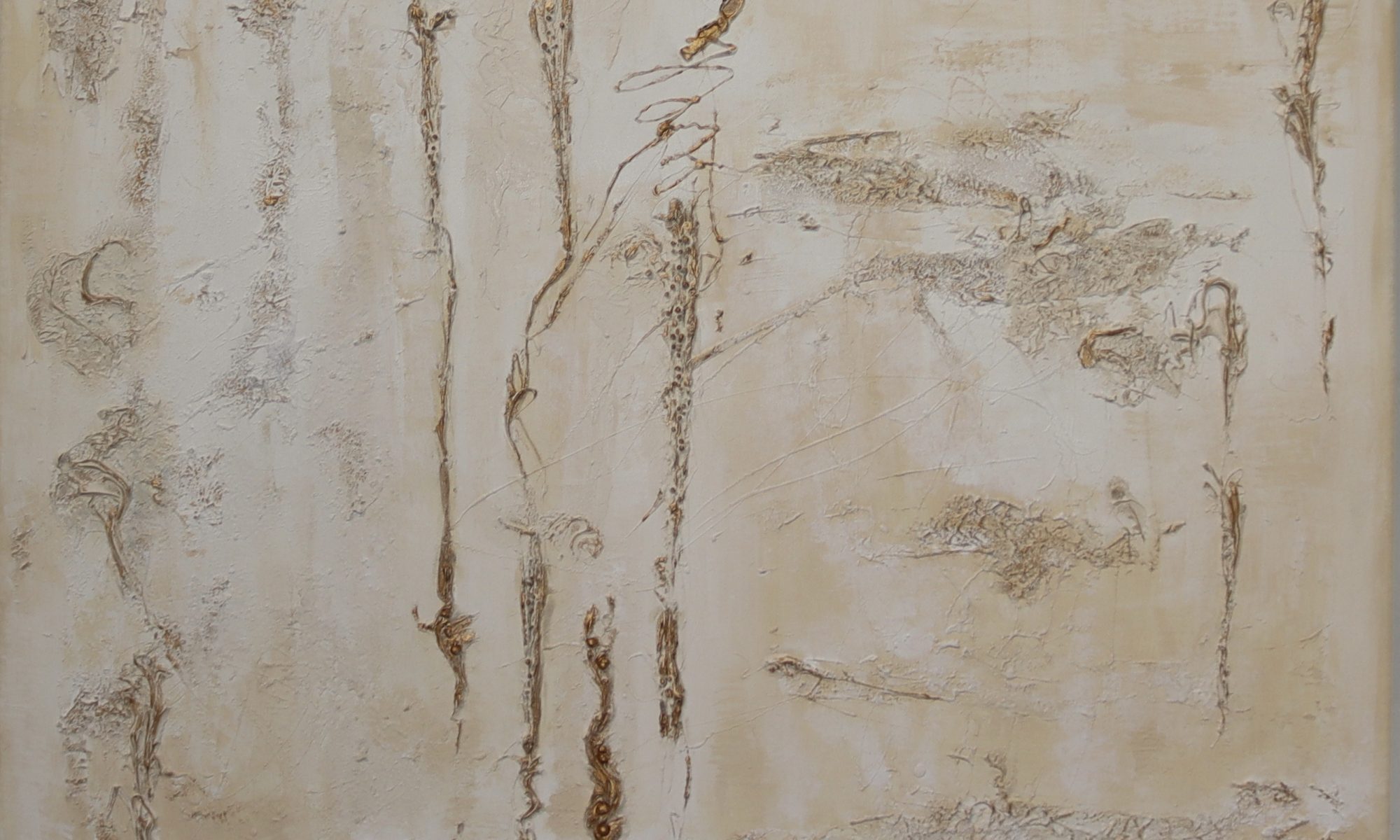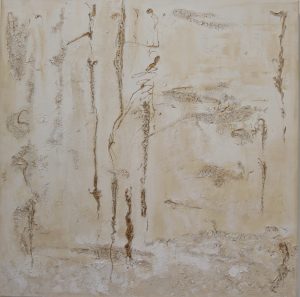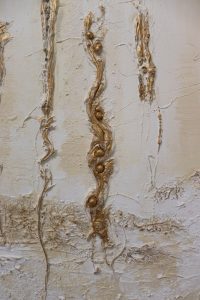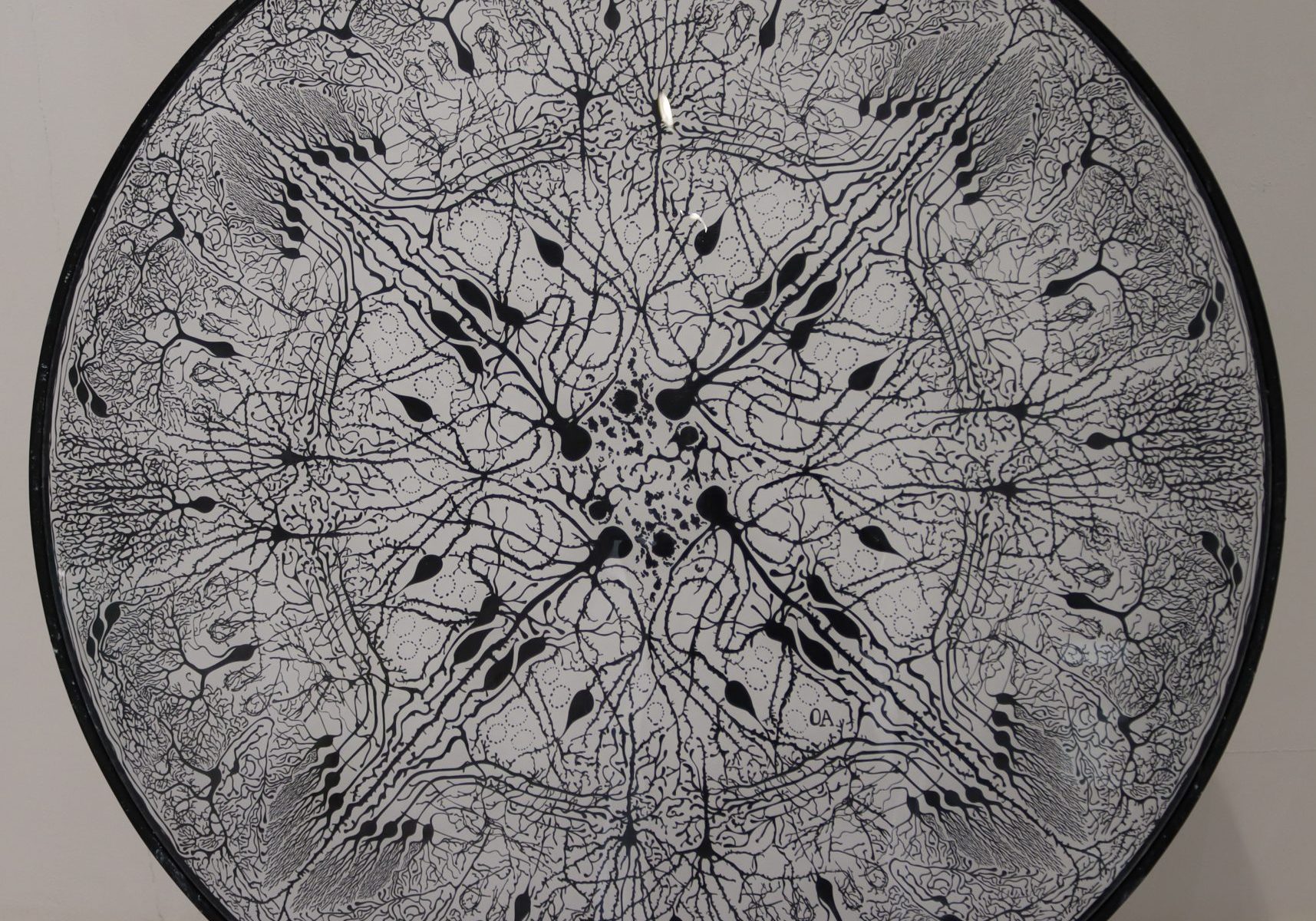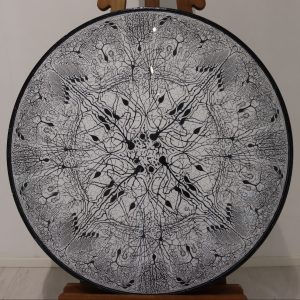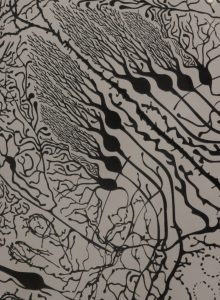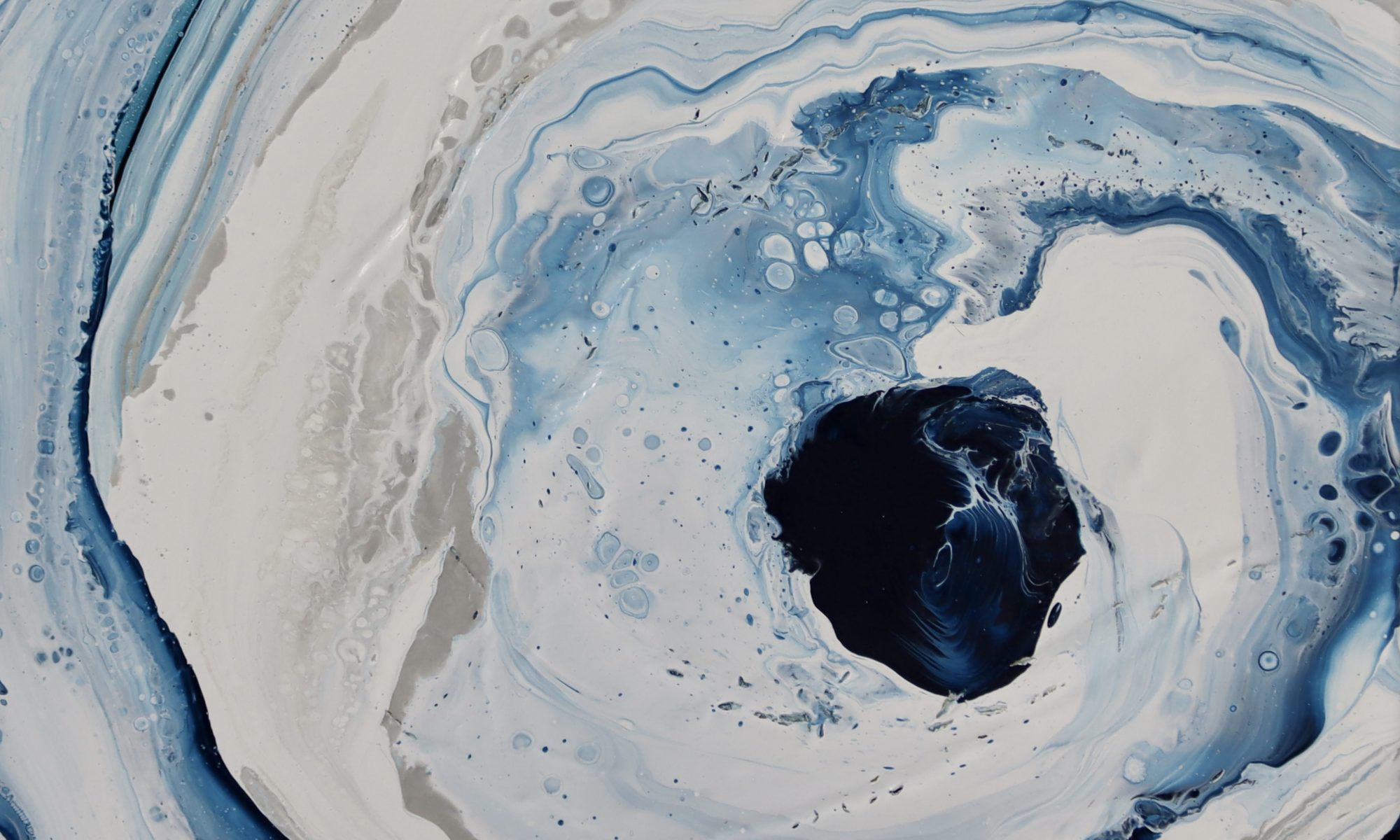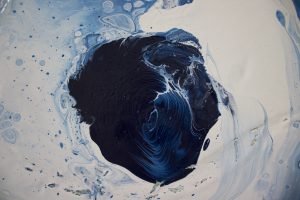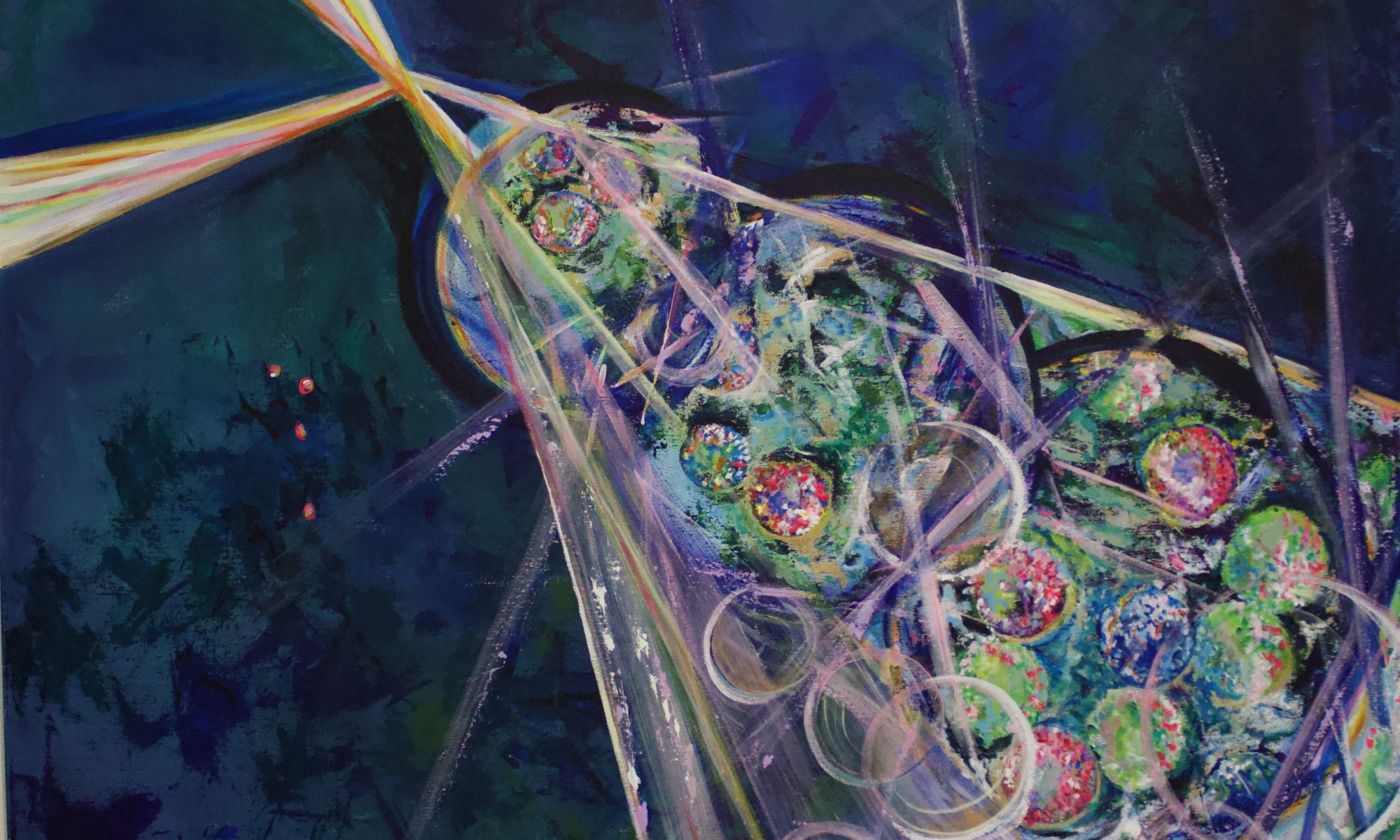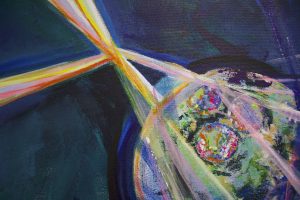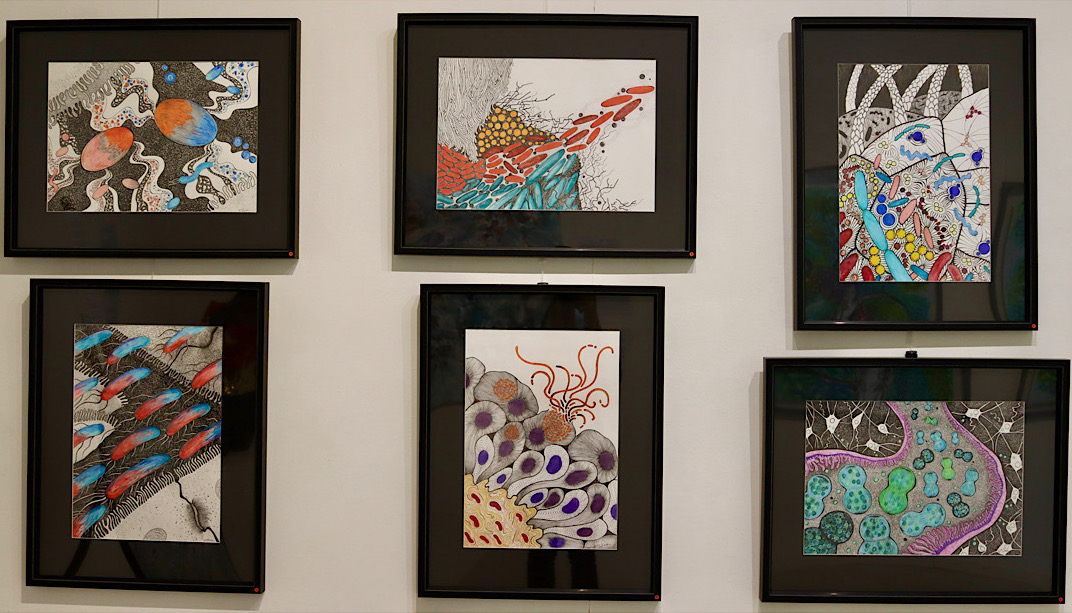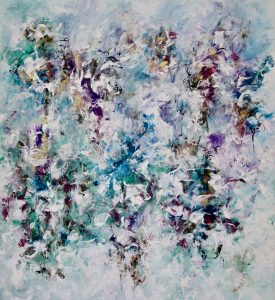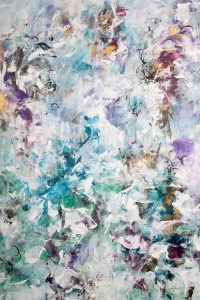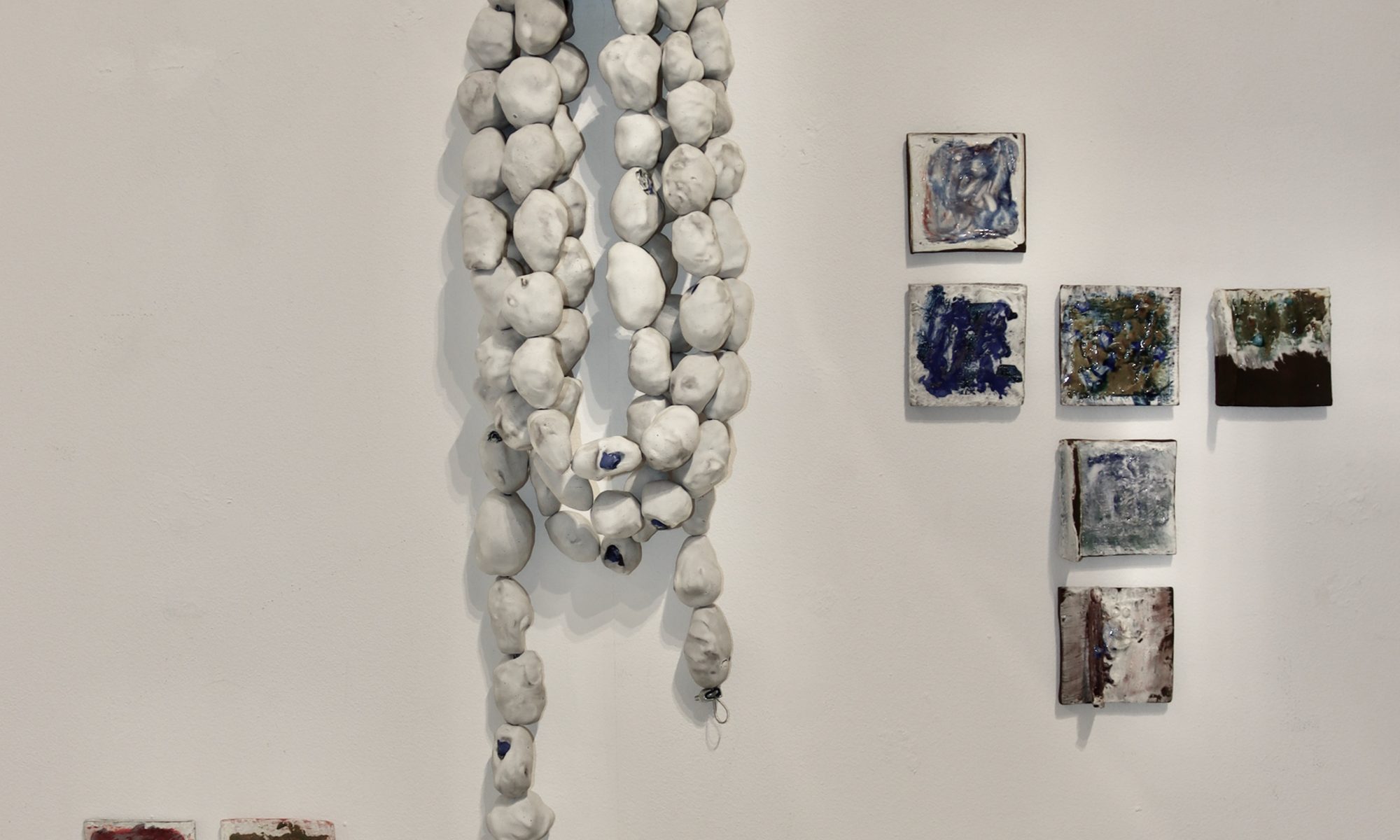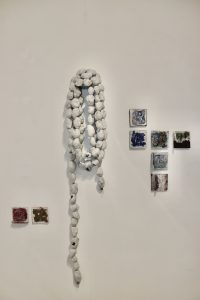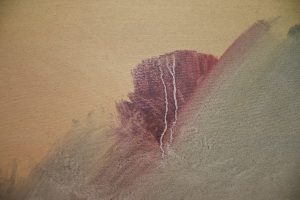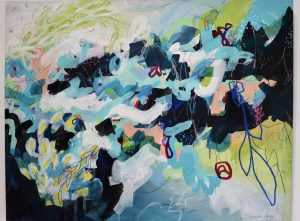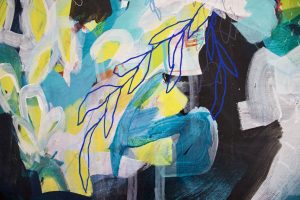Ink pen and watercolour pencils on artist paper.
A 6-part series illustrating the remarkable world inhabited by microorganisms such as bacteria.
From left to right:
Top row:
1. ’Bacterial talks’ represents bacteria of the gut microbiota exchanging chemical signals for communication.
2. ‘Bacterial cities’ highlights the ability of bacteria to form biofilms to offer protection against antibiotics and the immune system.
3. ‘Friends or foes?’ illustrates a bacterial community on the surface of human skin.
Bottom row:
4. ‘Dangerous attackers’ depicts pathogenic, harmful bacteria attacking the epithelial cells in the human intestine
5. ’Hide-and-seek’ demonstrates bacteria avoiding antibiotics inside the bladder epithelial cells.
6. ‘Drug-eaters’ shows gut bacteria consuming the drug aimed to treat Parkinson’s disease
More detailed insight:
1. Bacteria talks: Bacteria are the most ancient form of life. Scientists estimate that these primitive single-celled organisms appeared on Earth more than 4 billion years ago – about 3 billion years before the first animals and plants. Amazingly, despite their primitive organisation, these organisms have mastered communication, a skill that is typically associated with higher forms of life, such as mammals. These bacterial communications are termed “quorum sensing”, which occur via the production and perception of certain chemical molecules. As a bacterial population grows, the concentration of these signalling molecules in the environment increases, initiating group behaviours such as emission of light, social motility, or formation of biofilms – complex structures that protect bacteria from harmful environments.
Pathogenic bacteria use quorum sensing to synchronise the production of virulence factors. Researchers believe that interrupting this communication mechanism can reduce harm to the human body by desynchronising actions and reducing efficiency. Our bodies would then gain additional time to discover and eliminate the dangerous invaders. In the Bioactivity Screening Group, we develop new experimental models of the infection process and test thousands of compounds with the aim of discovering novel molecules that inhibit bacterial communication.
2. Bacterial cities: Just like us, bacteria also gather together to increase their chance of survival. Such bacterial communities are called biofilms. Biofilms can be found in natural ecosystems such as forests and oceans, and are also responsible for diseases when present in our bodies. Just as people support each other by sharing information and trading resources, bacteria also share acquired knowledge and ways of becoming resistant to antibiotics. The biofilm mode of growth is one such example. This has become a worldwide problem, even recognised by the World Health Organization.
Biofilms are formed when bacteria adhere to surfaces on the human body such as our teeth, or on medical devices like prosthetics or catheters. In our body, bacterial biofilms build walls around their colonies to protect themselves from the immune system and antibiotic treatment. These walls are formed by various bacteria-produced molecules that either prevent the penetration of antibiotics or neutralise them.
The Bioactivity Screening Group studies biofilms through several projects, ranging from deepening our understanding of how this community functions (aiming to identify their weak points) to discovering new agents to defeat them.
3. Friends or foes? The skin is the largest organ of the human body, inhabited by myriads of bacteria and fungi. These microscopic organisms form a protective layer to prevent the growth of pathogenic species and to control skin immunity. Disruption of the skin microbiome can result in dry itchy skin, inflammation, or more serious clinical conditions. The composition and well-being of our skin microbiome are affected by many different factors, for example, our diet, smoking, and exposure to UV light and air pollution. In certain conditions, these innocuous microbes may become harmful. For example, Staphylococcus species happily living on healthy skin can also colonise wounds and cause chronic wound infections that are difficult to treat.
One of the research directions of the Bioactivity Screening Group is the development of natural product-based antibacterial wound dressings.
4. Dangerous attackers: The intestine hosts a vast microbial community. In fact, our body contains more microbial cells than human cells. These residents assist with a variety of critical duties. For example, many important nutrients such as fibres and breast milk are digested by them. They also aid in immunological responses and are thought to have an impact on mental health.
When this system is out of balance or invaded by pathogenic bacteria whose lifestyle necessitates the exploitation of the host, health problems can arise. For example, enteropathogenic Escherichia coli is a bacterium that causes gut damage by forcing intestinal cells to detach from one another and damages hair-like surface structures at the cell surface called microvilli.
One of the research aims of the Bioactivity Screening Group is to discover drugs that can prevent enteropathogenic Escherichia coli from destroying intestinal cells, thus rendering it harmless. The microorganisms are studied using automated microscopy while testing various new compounds in the search for inhibiting drugs.
5. Hide-and-seek: Uropathogenic Escherichia coli is a pathogenic bacterium that causes over 80% of community-acquired urinary tract infections. With the help of special surface structures, bacterial cells move towards the cells that line the bladder and attach to them. Some bacteria manage to bypass the protection of the cell surface, penetrating the bladder cells where they then multiply. These stealthy intracellular communities hide from the immune system and the majority of antibiotics. Days or even months later, these bacteria emerge from the cell, causing recurrent urinary tract infections.
In the Bioactivity Screening Group, we aim to model the infection process by co-culturing bacteria and human cells in multi-well plates. Using these models, we hope to discover molecules that are able to penetrate the cell membrane and kill the hidden enemy.
6. Drug eaters: There are trillions of bacteria inhabiting the human gastrointestinal tract. Scientists have just begun to understand the many ways in which these gut-dwelling bacteria affect our health. Gut bacteria play a very important role in our health by helping control digestion, boosting our immune system, and many other aspects of health.
However, sometimes these bacteria can also cause trouble – especially in people taking the Parkinson’s disease medication, levodopa. Parkinson’s disease is a neurodegenerative disease affecting approximately 1–2% of people over the age of 60, and levodopa is the most commonly prescribed drug that relieves the symptoms of this disease.
It has been recently discovered that many members of a specific group of gut bacteria known as Enterococcus have an enzyme that allows them to consume this Parkinson’s disease drug before the body is able to absorb it – which of course greatly reduces its efficacy! The aim of one project in the Bioactivity Screening Group is to develop compounds that can stop this drug-eating bacteria from consuming the drug, without harming the otherwise healthy gut microbiome.
